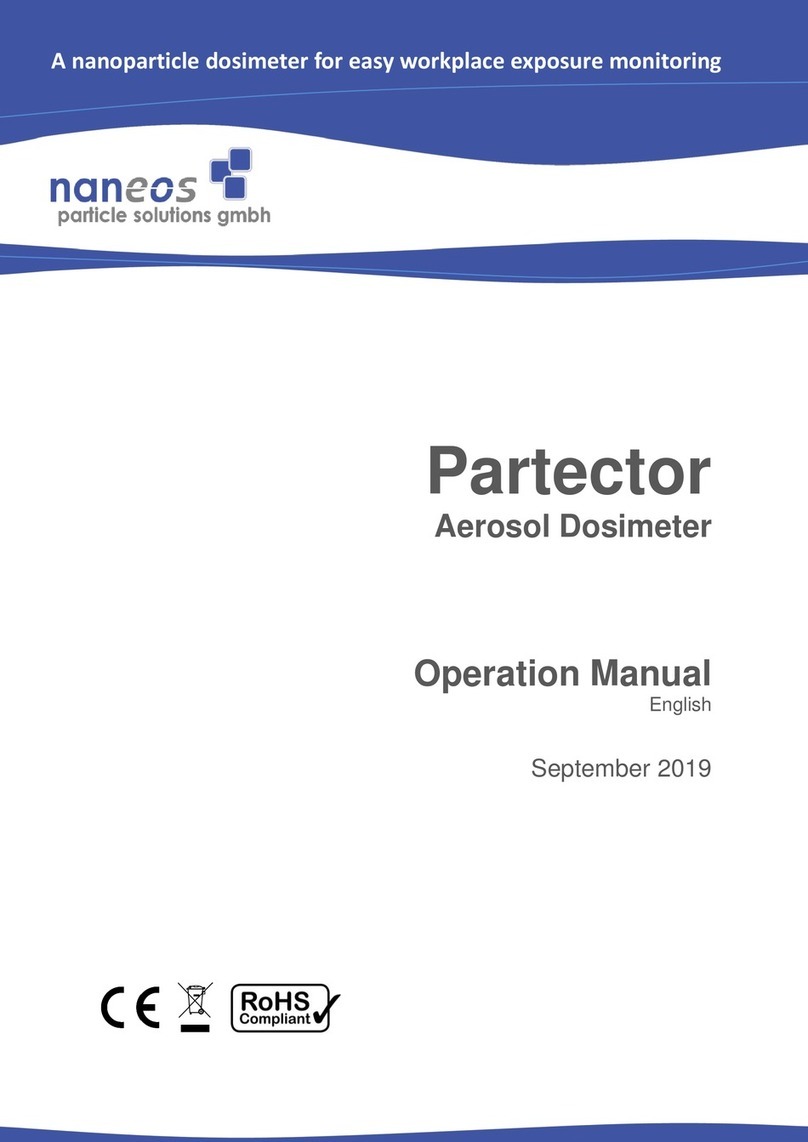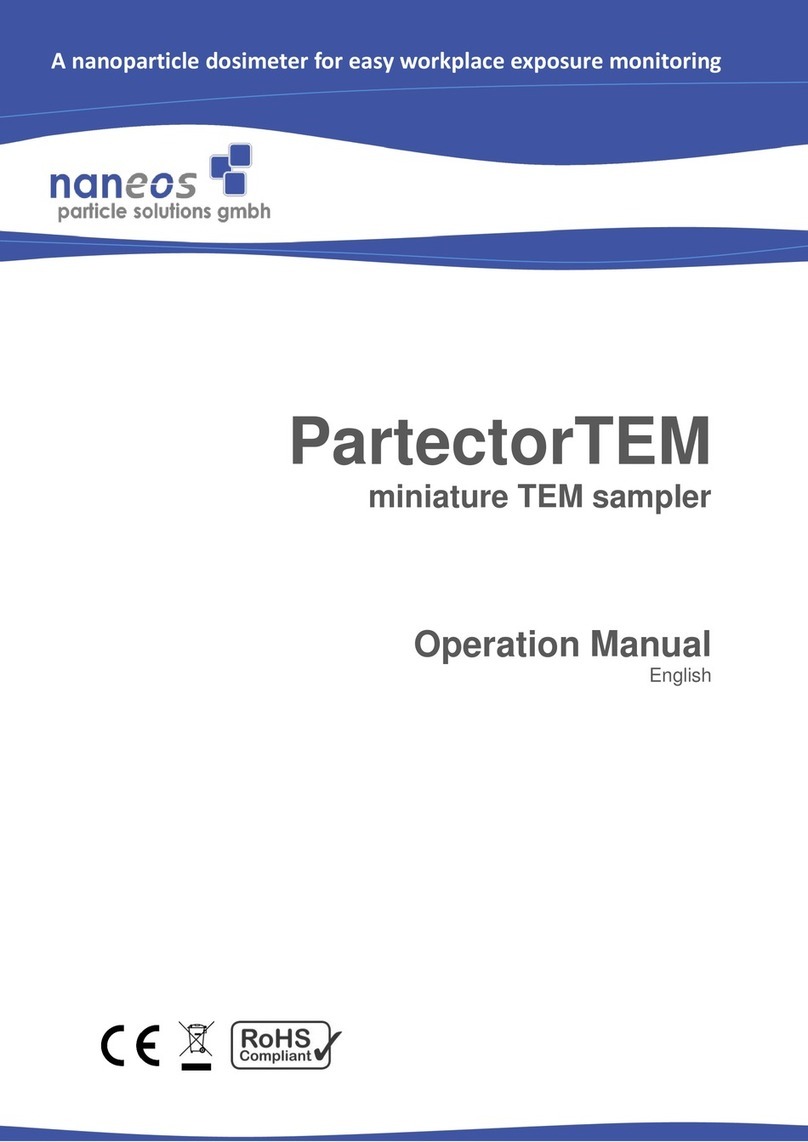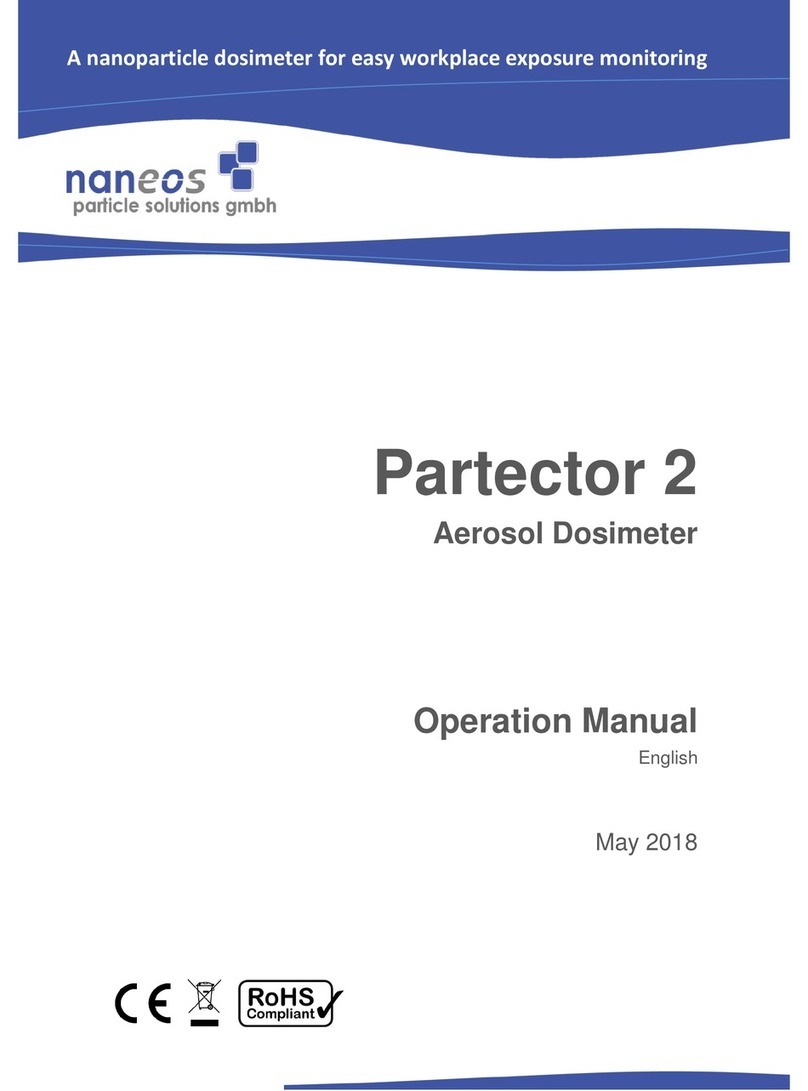www.naneos.ch
7 | 24
Aerosol inlet and outlet
The aerosol inlet is located at the top of the instrument. The internal pump
provides a regulated air flow of about 0.5 l/min. The standard aerosol inlet
has a 6-mm barb for tubing connection and contains a coarse wire mesh
to keep coarse dirt and small insects out of the instrument.
The air exits the device via the slits in the right-hand side of the housing.
Note that the air is not filtered internally, so do not connect the instrument
to hazardous nanoparticle sources!
Tubing
When using the Partector 2 with tubing make sure not to use
conductive silicone tubing. It releases silanes which lead to rapid
fouling of the Partector's corona wire. We recommend using PVC tubing
instead –a nice flexible version is Tygon S3 E-3603, a sample of which
is included in the Partector 2 case. If in doubt about using tubing, please
contact us. In any case, tubing should only be as long as necessary to
prevent particle losses in the tubing.
Figure 2: different tubing options
Supplying power
To chargethe Partector 2 or to operate it forperiods longerthan the battery
lifetime, connect the Partector 2 USB port to a PC, Laptop or to a USB-
charger or to a mobile power bank to charge the device.
While charging, the blue charge LED on the front panel lights up. When
the Partector 2 is fully charged, the LED turns off.
The Partector 2 supports fast charging (1.5A charging current). For
optimum charging, use the original USB power supply and USB cable.
Some PC’s and USB power supplies only provide 0.5A charging current,
which will prolong the charging duration.
Turning the device on and off
To switch on the device, press the power button. To turn it off, press and
hold the power button for two seconds and release it when the goodbye
message appears.






























